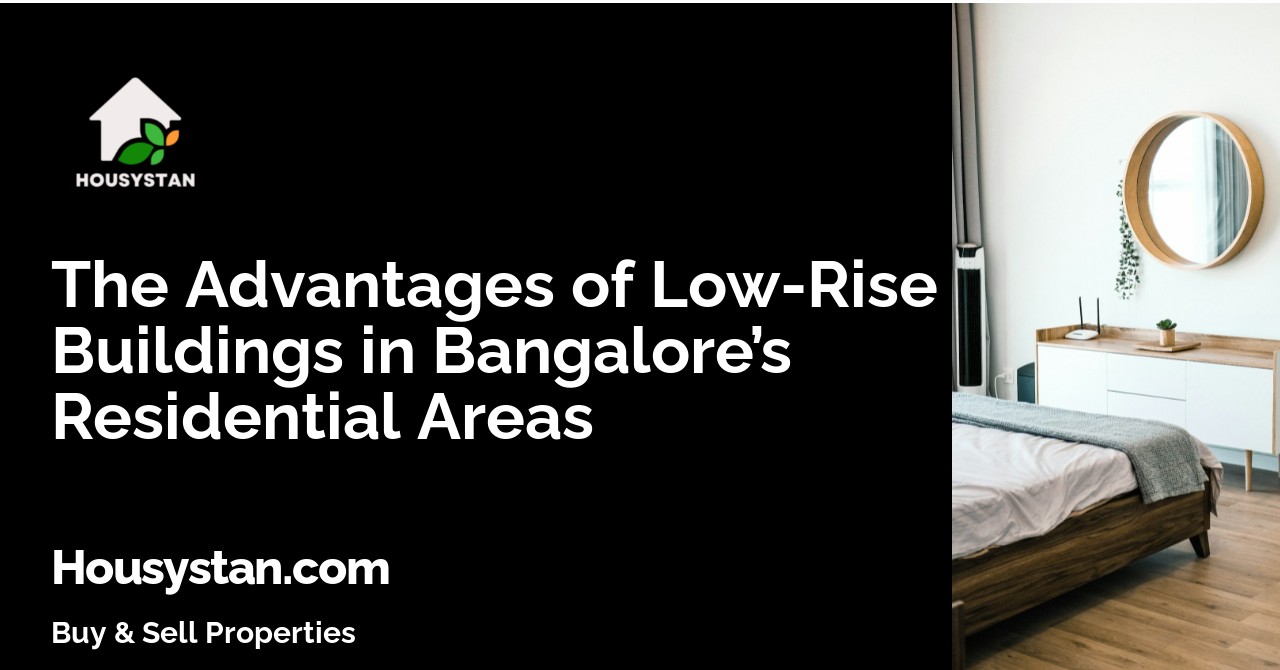The Advantages of Low-Rise Buildings in Bangalore’s Residential Areas
Read latest blogs and articles from Housystan

The Information mentioned here was last updated on:
2/12/2025Low-rise buildings are gaining significant popularity in Bangalore’s residential landscape, offering a host of benefits that cater to modern urban living while preserving the city’s unique charm. As Bangalore continues to expand, homeowners and investors are increasingly drawn to low-rise developments due to their harmonious integration with the city’s environment and lifestyle preferences.
One of the primary advantages of low-rise buildings in Bangalore is the sense of community they foster. Unlike high-rise towers, low-rise apartments and villas encourage closer interactions among residents, creating a neighborhood-like atmosphere that is highly valued across various localities, including Indiranagar, Jayanagar, Whitefield, and Koramangala. This communal environment enhances safety and promotes long-lasting relationships between neighbors, making it ideal for families and working professionals alike.
Low-rise structures also contribute to a healthier and more sustainable living experience. With fewer units per building, residents enjoy reduced noise levels, better ventilation, and abundant natural light. These features are particularly crucial in Bangalore’s climate, where fresh air and sunlight contribute significantly to well-being. Additionally, low-rise developments typically come with spacious layouts, green spaces, and landscaped gardens, which are essential for relaxation and leisure in bustling urban settings.
- Verified Tenants/Buyers
- Unlimited Property Listing
- Zero subscription/charges fee
From a practical standpoint, low-rise buildings often mean lower maintenance costs and more efficient management of shared amenities. Parking, security, and recreational facilities are easier to access and maintain, making everyday living more convenient for residents. Furthermore, the architectural design of low-rise buildings often complements Bangalore’s traditional aesthetics, preserving the city’s heritage while supporting contemporary living standards.
For real estate investors and homebuyers, low-rise residential projects in Bangalore present attractive options due to their stable appreciation rates and high demand. Many sought-after neighborhoods, such as Malleshwaram, Basavanagudi, and HSR Layout, feature low-rise homes that retain their value and offer a premium living experience. Proximity to essential infrastructure, schools, IT parks, and commercial hubs further enhances their appeal, making them a smart choice for long-term investment.
In summary, choosing low-rise buildings in Bangalore’s residential areas ensures a blend of comfort, community, and sustainability. These developments offer an inviting lifestyle amidst the city’s vibrant culture and growing urban infrastructure, making them a preferred option for discerning residents and investors across the Garden City.